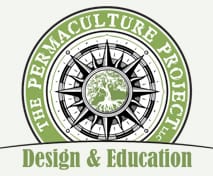httpv://www.youtube.com/watch?v=yEHc_UzeT9w
When I think about the penultimate plant for Permaculture sites I go immediately to comfrey (symphytum officinale). Simply by cutting a button sized piece of tap root and planting it, within two weeks a new plant emerges. In Southern Illinois I take four cuttings of the above ground portions a season and use them in countless ways. At the moment I have a five gallon bucket stuffed with comfrey where it will ferment for two weeks in water, bubbled (with an aquarium bubbler, as is done for compost tea), for 24 hours, and then used as a spray on the food forest and annual crops. As the prime dynamic accumulator in the plant matrix this dark liquid feeds the plants with a mineral-, and enzyme-rich soup. It also makes for a superior mulch! Through the years I have made it a goal to eliminate the need to buy in foliar feeds and fertilizers such as kelp and fish and simply utilize the biological intelligence bequeathed on us by plants and animals: what is already growing on the property and in the the immediate region, what is produced in compost bins, what the worms are generating, the mycorrizhae, etc. Besides being a delicious edible (the young leaves) and a potent medicine (otherwise know as “knitbone”), the bumble bees are a site to observe as they hold themselves suspended upside-down while seeking the nectar deep inside the dangling flowers.
Comfrey produces more than 6 times the amount of protein than soy. It is excellent when used in a smoothie with other leaves, fruits, berries and yogurt. I make a salve out of comfrey, calendula, St John’s wort, olive oil and beeswax and use it topically on cuts, bruises and burns.
Comfrey is a perennial herbaceous plant that is native to Europe and temperate parts of Asia. Fond of moist soils, comfrey has a thick, hairy stem, and grows 2 – 5 feet tall. Its flowers are dull purple, blue or whitish, and densely arranged in clusters. The leaves are oblong, and often look different depending upon their position on the stem: lower leaves are broad at the base and tapered at the ends while upper leaves are broad throughout and narrow only at the ends. The root has a black outside and fleshy whitish interior filled with juice.”
As the month progresses I will be adding more pertinent content to this post about the uses of comfrey. If you have any significant stories, information or important facts about your experience with this wonderful plant please respond.
Here are several links exploring comfrey and its numerous functions and uses:


